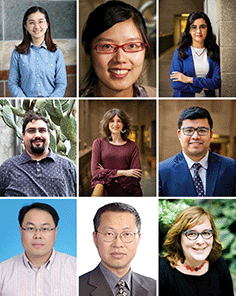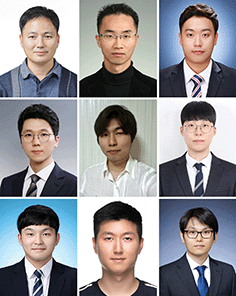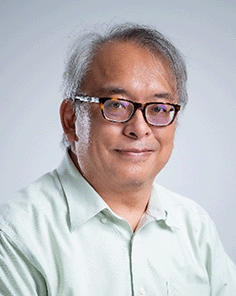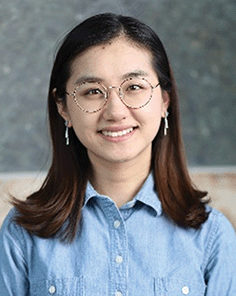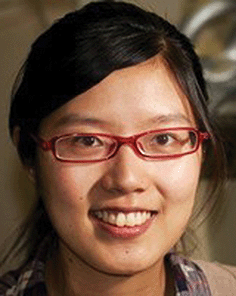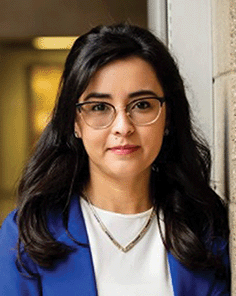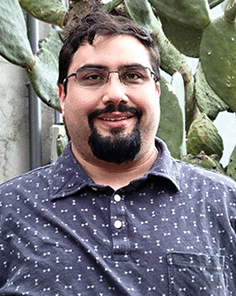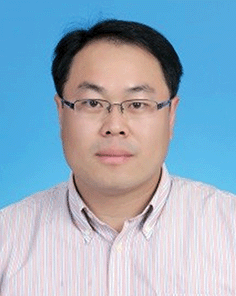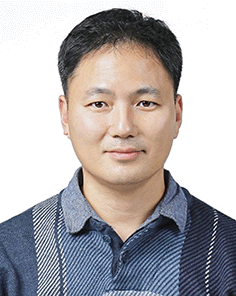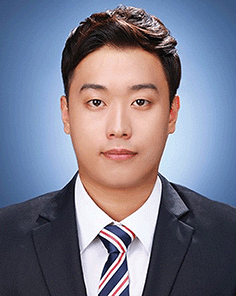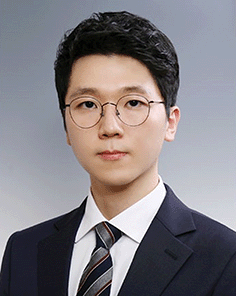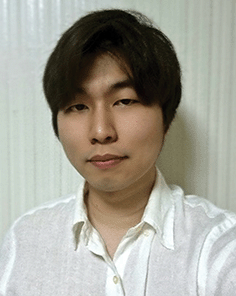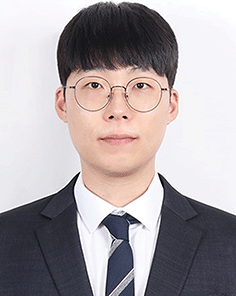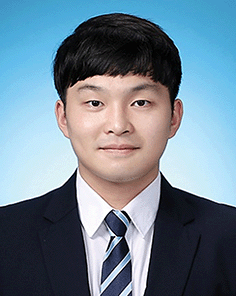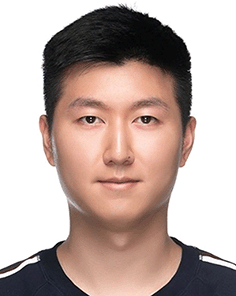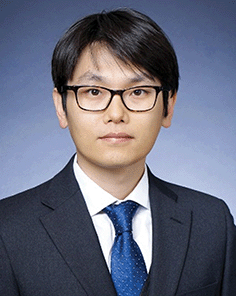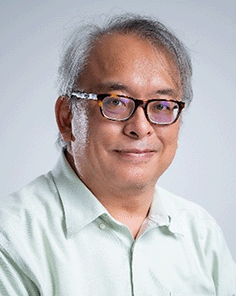Nanoscale Horizons 2021 Outstanding Paper Award
We are delighted to introduce the winners of our 2021 Outstanding Paper Award in this Editorial.Our selection process remains the same as in previous years (see our introductory Editorial from 2019, https://doi.org/10.1039/C9NH90013F), retaining the focus on the science presented and the potential future impact of the work. The quality of the articles we published throughout 2021 was excellent, with two communications identified as equally exceptional during our selection process. As such, we will be jointly giving our Outstanding Paper Award to two communications for 2021, in addition to an Outstanding Review.
Please join us in congratulating our winners; we hope you enjoy reading their outstanding articles as much as we did.
Nanoscale Horizons Outstanding Article joint winner 2021
Synthesis of monodisperse high entropy alloy nanocatalysts from core@shell nanoparticlesYifan Chen, Xun Zhan, Sandra L. A. Bueno, Ibrahim H. Shafei, Hannah M. Ashberry, Kaustav Chatterjee, Lin Xu, Yawen Tang and Sara E. Skrabalak
This article (https://doi.org/10.1039/D0NH00656D) reports the synthesis of high entropy alloy nanoparticles from core@shell nanoparticles. These nanoparticles consist of 5 metals mixed at the atomic scale, where traditional co-reduction routes to such alloy nanoparticles results in a mixture of ill-defined structures. By preparing core@shell nanoparticles first and annealing them to facilitate mixing of the core and shell components, uniform alloy nanoparticles were obtained. These nanoparticles were shown to be durable electrocatalysts. We envision that this nanocrystal conversion pathway to high entropy alloy nanoparticles can be used to make new compositionally complex nanoparticles with structural precision.
This manuscript was only possible through close collaboration and a team approach. First author Yifan Chen was a graduate student with Professors Lin Xu and Yawen Tang at Nanjing Normal University and was given the opportunity to visit the group led by Professor Sara Skrabalak. Upon her arrival, Yifan had been working on the design of core@shell electrocatalysts composed of 4 metals (two in the core and two in the shell) when we began discussing high entropy systems in meetings. These discussions led Yifan to add a 5th metal to the system and test the possibility for mixing upon heating. Given the short period of her visit, Yifan worked quite efficiently to screen synthetic conditions and test the electrocatalytic capabilities of the new materials. However, there was insufficient time for her to be trained on all of the analytical tools required to characterize her materials or complete a few control experiments. As the whole group was excited by her synthetic advance, various students offered their expertise to make sure the research was completed. Thus, she collaborated with Xun Zhan and Sandra Bueno on microscopy analysis and Kaustav Chatterjee on XPS analysis. Ibrahim Shafei and Hannah Ashberry assisted with control experiments and durability testing of the electrocatalysts. Much of the data processing and writing occurred when Yifan returned to Nanjing Normal, receiving critical input from all of her advisors and collaborators. An exciting outcome is that both Sandra and Ibrahim have continued to study the formation of high entropy alloy nanoparticles through this nanocrystal conversion pathway and additional manuscripts are anticipated.
Nanoscale Horizons Outstanding Article joint winner 2021
Ferroelectric polymer-based artificial synapse for neuromorphic computingSungjun Kim, Keun Heo, Sunghun Lee, Seunghwan Seo, Hyeongjun Kim, Jeongick Cho, Hyunkyu Lee, Kyeong-Bae Lee and Jin-Hong Park
In this paper (https://doi.org/10.1039/D0NH00559B), the authors investigated the effects of the formation temperature of the ferroelectric material, P(VDF–TrFE), and the nature of the contact metals on the operation of a FeFET-based artificial synapse in terms of various synaptic performance indices. Excellent ferroelectric properties were induced by maximizing the size and coverage of the β-phase domains in the P(VDF–TrFE). A high barrier metal improved the dynamic range and nonlinearity by suppressing the contribution of the tunneling current to the post-synaptic current. Subsequently, the authors studied the influence of the synaptic characteristics on the training and recognition tasks by using MNIST fashion and handwritten-digit datasets.
Prof. J.-H. Park's research group at Sungkyunkwan University (SKKU) in Korea is composed of outstanding and passionate researchers. His team's research interests focus on new and innovative materials, structures, and process technologies of semiconductor devices. At present, the team's main research fields include: beyond-2 nm logic devices (2D multi-channel GAA-FET) and next generation low-power devices (multi-valued-logic devices, neuromorphic devices, and process-in-memory devices).
Nanoscale Horizons Outstanding Review winner 2021
Nanoarchitectonics: what's coming next after nanotechnology?Katsuhiko Ariga
This review (https://doi.org/10.1039/D0NH00680G) outlines an emerging concept, nanoarchitectonics, as a concept coming next to nanotechnology. The production of functional material systems using nanoscale units can be achieved by the fusion of nanotechnology with other research disciplines, such as molecular synthesis, atom/molecular manipulation, self-assembly/self-organization, field-applied assembly, micro-fabrication, and bio-related process. The concept of nanoarchitectonics is supposed to architect functional materials using nanoscale units on the basis of nanotechnology. In this focus article, the essences of nanotechnology and nanoarchitectonics are first explained together with their historical backgrounds. Then, several examples of material productions based on the concept of nanoarchitectonics are introduced according to several approaches.
Dr Heather Montgomery, Managing Editor
Professor Dr Katharina Landfester, Editorial Board Chair
Author Biographies
Nanoscale Horizons Outstanding Article joint winner 2021
Yifan Chen is a postdoctoral researcher in the Electron Microscopy for Materials Science department in Dr Sara Bal's group (University of Antwerp, Belgium). She received her PhD degree from Nanjing Normal University in Dr Yawen Tang's group. During her PhD candidacy period, she was a visiting student at Indiana University – Bloomington, working in the group led by Dr Sara Skrabalak. Yifan was a Research Fellow in the Centre for Bioimaging Sciences at the National University of Singapore, in Dr Utkur Mirsaidov's group. She joined the Electron Microscopy for Materials Science department in 2021 and her research interests are centered on the direct visualization of surface ligands by transmission electron microscopy.
Xun Zhan is an Assistant Research Scientist in the Electron Microscopy Center at Indiana University – Bloomington. She has a PhD from the Department of Materials Science and Engineering at Case Western Reserve University. She then pursued postdoctoral research at the University of Illinois at Urbana-Champaign. Her research is focused on microstructure characterizations of functional nanomaterials using advanced scanning transmission electron microscopy.
Sandra L. A. Bueno received her B.A. in Chemistry from the University of Antioquia under the direction of Prof. John Jairo Fernandez. She also interned with Prof. Luis Echegoyen at the University of Texas at El Paso. She then moved to Indiana University, where she completed her PhD degree in 2021 in Chemistry as an NSF Graduate Research Fellow under the tutelage of Prof. Sara Skrabalak. Recently, she joined the research group of Dr Emory Chan at Lawrence Berkeley National Laboratory as a postdoctoral fellow, where her interests focus on the use of combinatorial and high-throughput colloidal synthesis of semiconductor nanoparticles to evaluate their physical properties.
Ibrahim H. Shafei is a graduate student at Indiana University – Bloomington (IUB), working in the Skrabalak Group, where he currently studies the mechanisms of high entropy alloy syntheses. His previous work was as an undergraduate with Xingchen Ye, where he worked on tuning the plasmon resonances of metal oxide nanoparticles. He graduated from IUB in 2018 with a B.Sc. in Chemistry.
Hannah M. Ashberry received her BS in Chemistry at Millersville University (PA). She also completed an REU with Cindy Berrie at the University of Kansas. Hannah completed her PhD in Chemistry from Indiana University – Bloomington in the fall of 2021 under the advisement of Prof. Sara E. Skrabalak. She is currently a National Research Council Postdoctoral Fellow at the U.S. Naval Research Laboratory under the advisement of Albert Epshteyn, where her interests focus on the development of materials for heterogeneous catalysis.
Kaustav Chatterjee is a PhD candidate advised by Professor Sara E. Skrabalak at Indiana University – Bloomington. He received his MS degree in Chemistry from the Indian Institute of Science Education and Research (IISER) Mohali, India, in 2018, and B.Sc. (Honours) degree in Chemistry from St. Xavier's College, Kolkata, India, in 2015. His MS dissertation research involved the conversion of toxic pollutants to value-added chemicals using semiconductors in the laboratory of Professor Ujjal K. Gautam. His present research focuses on developing novel and durable multimetal semiconductor photocatalysts for solar energy harvesting applications and elucidating their structure–property correlations.
Lin Xu is an Associate Professor at Nanjing Normal University. He gained his PhD degree in Chemistry from Nanjing University in 2010. After that, he conducted postdoctoral research with Prof. Sara Skrabalak's supervision at Indiana University – Bloomington until December 2011. He moved to Nanyang Technological University (Singapore), where he was a postdoctoral fellow until April 2015. His current research interests focus on the rational design and synthesis of nanomaterials towards energy-related applications, including electrocatalysis, fuel cells, and metal–air batteries. Hitherto, he has published more than 100 papers. He serves as an advisory board member for Nanoscale, Nanoscale Advances, Soft Science and International Journal of Minerals, Metallurgy and Materials.
Yawen Tang received his BS degree and MS degree from Nanjing Normal University in 1992 and 2002, respectively, and his PhD from Nanjing University of Science & Technology in 2011. His main research interests are energy materials and electrochemistry. Now, he is the Dean of the School of Chemistry and Materials Science of Nanjing Normal University, as well as the Director of the Jiangsu Chemical Engineering Society, the Jiangsu Electrochemical Professional Committee, and the Jiangsu Provincial Key Laboratory of New Power Batteries. He is also a member of the Jiangsu Hydrogen Fuel Cell Vehicle Industry Research Center and the Jiangsu Provincial Research Center for Hydrogen Fuel Cell Vehicle Industry.
Sara Skrabalak received her B.A. degree in Chemistry from Washington University in St. Louis in 2002, where she conducted research with Professor William E. Buhro. She was the recipient of the Sowden Award in undergraduate research from the Department of Chemistry. She then moved to the University of Illinois at Urbana-Champaign, where she completed her PhD degree in Chemistry in the fall of 2006 under the tutelage of Professor Kenneth S. Suslick. There, she was the recipient of the T.S. Piper Thesis Award for her work on porous materials. She then conducted postdoctoral research at the University of Washington – Seattle with Professors Younan Xia and Xingde Li, designing nanomaterials for biomedical applications. She began her independent career in the Chemistry Department at Indiana University – Bloomington in 2008, where she was named the James H. Rudy Professor in 2015. She is a recipient of both NSF CAREER and DOE Early Career Awards. She is a 2012 Research Corporation Cottrell Scholar, a 2013 Sloan Research Fellow, a 2014 Camille Dreyfus Teacher-Scholar, and recipient of the 2014 ACS Award in Pure Chemistry and 2015 Baekeland Award. In 2017, she was named both a Fulbright Fellow and Guggenheim Fellow, as well as the recipient of the Research Corporation's Frontiers in Research Excellence & Discovery Award. She is Editor-in-Chief for Chemistry of Materials and ACS Materials Letters, with previous appointments as an Associate Editor at Nanoscale and Nanoscale Advances. She is on their advisory boards, as well as that of Nanoscale Horizons. Her research group focuses on nanomaterial design and synthesis for applications in catalysis, solar energy use, secured electronics, chemical sensing, and more.
Nanoscale Horizons Outstanding Article joint winner 2021
Ferroelectric polymer-based artificial synapse for neuromorphic computing
Sungjun Kim received his MS/PhD degrees from the Department of Semiconductor and Display Engineering at Sungkyunkwan University in connection with the Samsung Institute of Technology (SSIT) in 2014 and 2022, respectively. He also had an appointment as a full-time professor in 2020 at SSIT in South Korea. Since he joined the Samsung Foundry Division in 2005, he has developed his expertise in process development and management projects for display driver ICs (DDI), advanced logic devices, and CMOS image sensor (CIS) products. He is currently working as a yield core engineer in the Sensor Manufacturing and Technology Team. His current role is mainly to establish yield improvement strategies by discovering yield improvement items. His current research interests are semiconductor process development for high-quality, reliable devices, as well as analog synaptic devices with ferroelectric materials for neuromorphic applications.
Keun Heo, Director of SPRC, received his PhD degree in electronics engineering from Korea University, South Korea in 2014. Since 2021, he has been an Associate Professor with the Department of Semiconductor Science & Technology, Jeonbuk National University, South Korea. His current research interests include advanced CMOS devices, nanomaterial based emerging memory devices, and intelligent integrated systems.
Sunghun Lee received his BS degree in Electrical Physics and Electrical Engineering from Kwangwoon University, Seoul, South Korea, in 2017. He received his MS degree from the Department of Electrical and Computer Engineering, Sungkyunkwan University, South Korea, in 2021.
Seunghwan Seo is an Electrical Engineering graduate student at Sungkyunkwan University (SKKU). He received his BS degree in Electrical Engineering from Ajou University in Suwon, South Korea. At SKKU, his research focuses on electronic devices based on two-dimensional materials.
Hyeongjun Kim is a PhD candidate in the Advanced Nano Semiconductor Device Lab at Sungkyunkwan University. He received his BS from the school of Electronic and Electrical Engineering at Sungkyunkwan University in 2016. His PhD research focuses on 2D transition metal dichalcogenide (TMD)-based neuromorphic devices and their applications.
Jeong-Ick Cho is currently pursuing an MS/PhD integrated course at Sungkyunkwan University. He received a BS degree in Electrical Engineering from Chungwoon University in 2019. His research interests include multi-valued logic devices/circuits and neuromorphic devices/circuits based on 2D vdW materials and amorphous oxide semiconductors for next-generation computing systems.
Hyun-Kyu Lee received his B.S degree in the Department of Electronic Engineering at Chonbuk National University, Jeonju, South Korea, in 2019. He received his MS degree from the Department of Electrical and Computer Engineering, Sungkyunkwan University, Suwon, South Korea, in 2021.
Kyeong-Bae Lee received his Bachelor's degree in Science (Mechanical Systems) from the University of Melbourne in 2019 and Master's degree from the School of Electronic and Electrical Engineering at Sungkyunkwan University in 2022. His current research interests include two-dimensional ferroelectric materials and devices.
Jin-Hong Park has been a Professor at the School of Electronic and Electrical Engineering, Sungkyunkwan University in Korea since 2011. From 2009 to 2011, he was at Kyung Hee University in Korea as an Assistant Professor and the IBM T. J. Watson Research Center in Yorktown Heights, NY, U.S.A. as a postdoctoral scientist. He also had an appointment as a visiting Professor from 2017 to 2018 at Stanford University, CA, U.S.A. He received his MS and PhD degrees in Electrical Engineering from Stanford University (U.S.A.) in 2006 and 2009, respectively, for his work on the physics and technology of low temperature germanium MOSFETs for monolithic 3D-ICs. In 2004, he was awarded a BS degree in Electrical Engineering from Sungkyunkwan University (Korea).
He has supervised more than 70 graduate students, has authored or co-authored more than 140 technical papers submitted to international journals, and has published more than 60 patents. He was selected as a Young Fellow Professor of the SKKU in 2019 (Sungkyunkwan University). He received the Young Scientist Award from the Graphene Research Society of Korea in 2018 for his contributions to 2D material-based device technology research, the Science/Technology Award from the National Research Foundation (NRF) of Korea in 2017 for his contributions to multi-valued logic device technology research, the Overseas Research Professor Fellowship from the LG Yonam Foundation in 2017, and the Haedong Young Engineering Researcher Award from the IEEE Korea in 2016.
His current research focuses on beyond-2 nm logic devices (2D GAA-FET) and next generation low-power devices (multi-valued-logic devices, neuromorphic devices, and process-in-memory devices).
Nanoscale Horizons Outstanding Review winner 2021
Nanoarchitectonics: what's coming next after nanotechnology?Katsuhiko Ariga is the Principal Investigator of the World Premier International (WPI) Research Center for Materials Nanoarchitectonics (MANA) at the National Institute for Materials Science (NIMS). He was born in 1962, and received his B.Eng., M.Eng., and PhD Degrees from the Tokyo Institute of Technology (TIT). He was an Assistant Professor at TIT, worked as a postdoctoral fellow at the University of Texas at Austin, USA, and then served as a group leader in the Super-molecules Project at the Japan Science and Technology (JST) agency. Thereafter, he worked as an Associate Professor at the Nara Institute of Science and Technology and then got involved with the ERATO Nanospace Project at JST. In January 2004, he moved to NIMS. He was appointed as a Professor of the University of Tokyo in 2017. He is a Fellow of the Royal Society of Chemistry, a Member of the World Economic Forum Expert Network and an Honorary Member of the Materials Research Society of India. His research field is based on supramolecular chemistry and surface science, including the boundary research areas of organic chemistry, physical chemistry, biochemistry, and materials chemistry. His major interests are the fabrication of novel functional nanostructures based on molecular recognition and self-assembly, including Langmuir–Blodgett films, layer-by-layer films, and mesoporous materials. Recently, he has been leading an emerging research era, nanoarchitectonics, as described in this awarded review paper.
| This journal is © The Royal Society of Chemistry 2022 |

